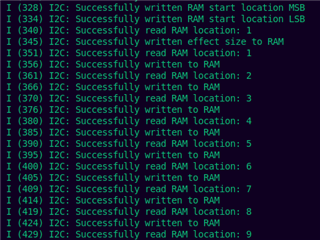Other Parts Discussed in Thread: USB2ANY
Tool/software:
I have been trying use the DRV2624 to play custom waveforms. I seem to not be able to execute any vibration on the haptic motor except for when I run the auto calibration. I understand that there is an inbuilt RAM to which the waveforms have to be written to in the specific manner. I am a bit confused about the write operation order when it comes to the configuration byte for it and the waveform itself (the voltage-time pairs), as to what order the whole sequence is to be written in and the registers.


